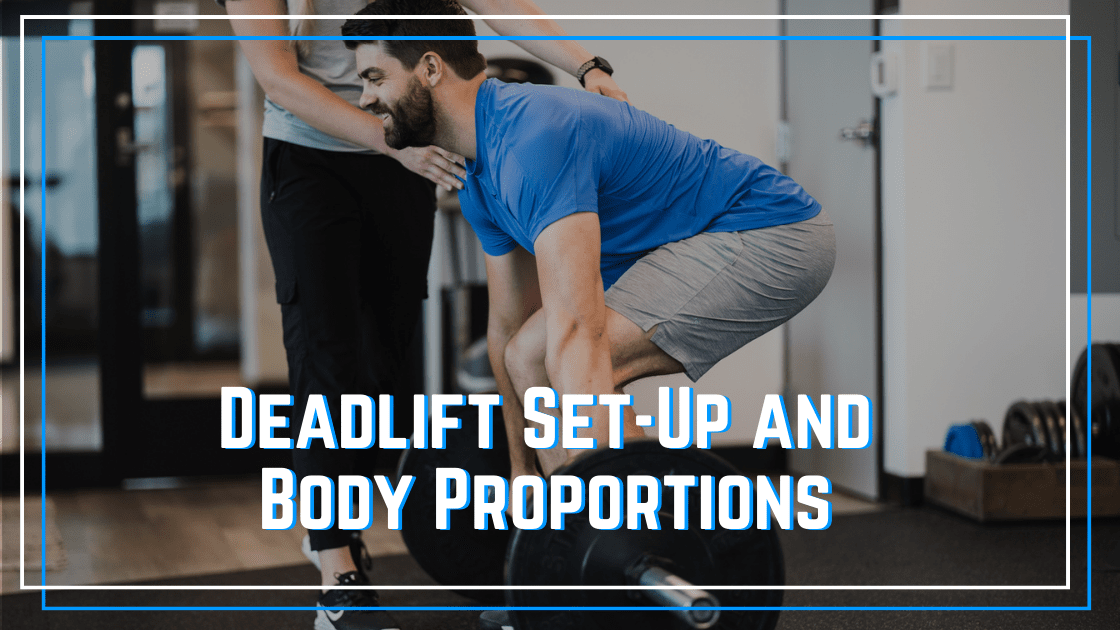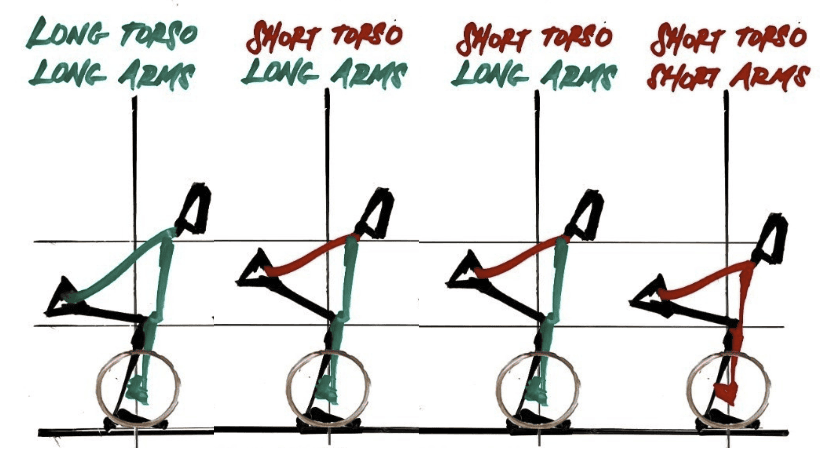The deadlift trains more muscles than any other exercise. Crushing the hamstrings, glutes, back, traps, and forearms. Building deadlift strength translates to sports performance and is a great movement to incorporate into low back rehab programs. Performing the deadlift with proper technique is crucial to your long-term progress and one factor that will greatly impact your form is your limb length. This article will explore deadlift anthropometrics.
Deadlift Anthropometrics
Athletes with long arms, compared to their trunks will generally have an easier time executing deadlifts. This is because the long arms allow an athlete to set up with their hips higher and reduce the total range of motion of the lift. This high hip starting position will allow them to maintain a more upright torso position, reducing the moment arm around the hip, which results in the back having to work less to stay locked in position.
Long legs (relative to the trunk) will also allow an athlete to start with a higher setup position. If the athlete also has long arms, they’ll be in a very advantageous position to deadlift. In fact, if you look at most of the best deadlifters out there, they’ll have long arms and legs. Here’s an example of a long-limbed athlete deadlifting.
View this post on Instagram
If an athlete has long legs and short arms (think a T-Rex dinosaur), however, they’ll be in a tough position to deadlift. The long legs will have their hips high, but short arms will result in them having to lean forward a lot to grab the bar, resulting in a straight leg deadlift- like set up position.
Athletes with a long trunk relative to their limbs will have deadlift set up considerations as well. Their long trunk will mean they must have incredibly strong spinal erectors to keep back positioning locked in during deadlifts. They’ll often set up with their hips a little lower, in a more squat-like position, the keep a more upright torso to “shorten” their trunk.
In reading this, please remember that we are discussing RELATIVE limb lengths. To learn more about body proportions, read Lon Kilgore’s “Measure of a Man” in the CrossFit Journal.
For more technical considerations when optimizing your leverage for deadlifts, watch this fantastic video by Alex Bromley, or his book “Superior Deadlift“.
For information on anthropometrics for the squat, read this article!







